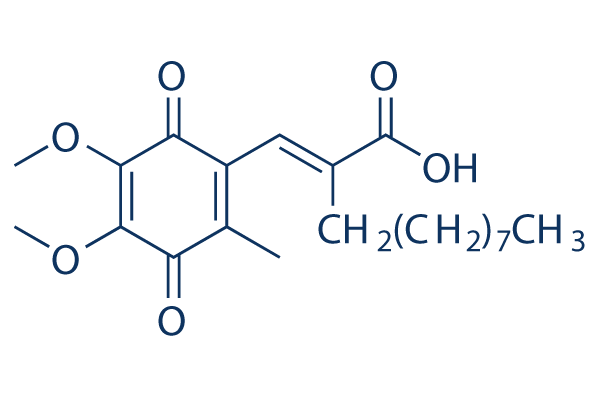| References: |
E3330 affects hemangioblast development in vitro via inhibition of Ape1 redox activity. E3330 inhibits the growth of human pancreatic cancer cell line PANC1, XPA1, MIAPACA, BxPC3, and PK9. E3330 also promotes exit of cell cycle in PANC1 cells, inhibits the DNA-Binding activity of HIF-1α and migration of pancreatic cancer cells. In JHH6 cells, E3330 prevents the functional activation of NF-κB via the alteration of APE1 subcellular trafficking and reduces IL-6 and IL-8 expression induced by TNF-α and FAs accumulation through blockage of the redox-mediated activation of NF-κB. In mice with endotoxin-mediated hepatitis, E3330 (300 mg/kg, p.o.) attenuates the elevation of plasma tumor necrosis factor activity and protectes mice from liver injury. In Rat model, E3330 (100 mg/kg, p.o.) also protectes rats from severe liver injury induced with endotoxin plus galactosamine. [5] For the detailed information of E3330, the solubility of E3330 in water, the solubility of E3330 in DMSO, the solubility of E3330 in PBS buffer, the animal experiment (test) of E3330, the cell expriment (test) of E3330, the in vivo, in vitro and clinical trial test of E3330, the EC50, IC50,and affinity,of E3330, For the detailed information of E3330, the solubility of E3330 in water, the solubility of E3330 in DMSO, the solubility of E3330 in PBS buffer, the animal experiment (test) of E3330, the cell expriment (test) of E3330, the in vivo, in vitro and clinical trial test of E3330, the EC50, IC50,and affinity,of E3330, Please contact DC Chemicals. |























